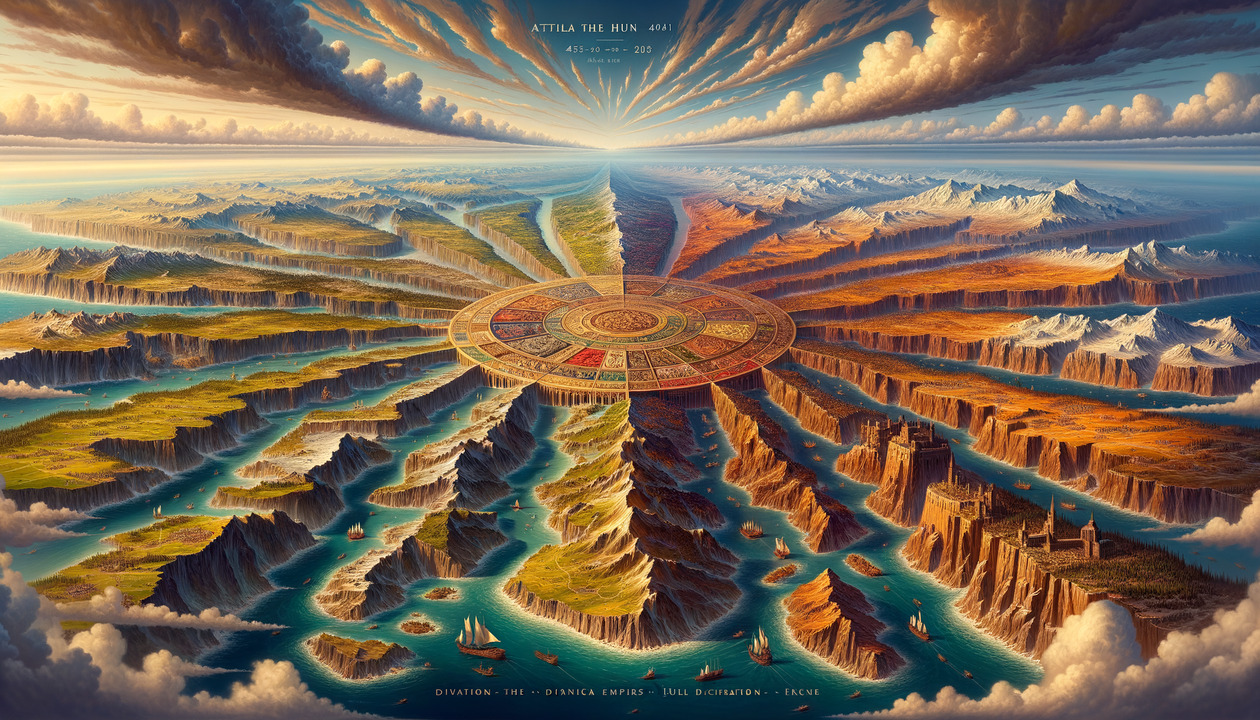
Division of the Empire Among His Sons
Attila’s death led to the division of his empire among his sons, which contributed to its eventual decline. This fragmentation demonstrated the challenges of succession and power distribution.
Division of the Empire Among His Sons
The death of Attila the Hun in 453 AD marked the end of an era for the vast Hunnic Empire that stretched across Europe. Known as the "Scourge of God," Attila had united a diverse amalgamation of tribal groups into a formidable power that challenged both the Western and Eastern Roman Empires. Yet, the fate of this empire, built on conquest and held together by Attila's leadership, took a significant turn with his demise. The division of the empire among his sons revealed both the intrinsic challenges of succession and the complexities of power distribution in historical contexts.
The Situation Post-Attila’s Demise
Following Attila's unexpected death—often speculated to be due to a hemorrhage or perhaps by assassination—his vast empire stood on precarious foundations. Unlike settled empires with bureaucratic governance, the Hunnic Empire was largely personified by Attila himself. His charisma, military prowess, and strategic acumen were the glue that held the confederation of Hunnic and allied groups together. In the absence of a unified system of governance or a clear succession plan, his death left a vacuum not easily filled.
Division Among His Sons
Attila’s sons, Ellac, Dengizich, Ernak, and Irnac, were left to inherit a sprawling empire fraught with inherent instabilities. Unlike their father, they were unable to command the same respect or loyalty from the various tribal factions that composed the Hunnic hegemony. The division was apparently aligned geographically and possibly ethnically, with sons taking charge of different groups or regions.
Ellac, as the eldest, initially assumed leadership, but he faced immediate resistance from both internal factions and external enemies. The brothers were confronted with the difficult task of maintaining control over a multi-ethnic confederation that had been bound together more by opportunistic alliances than by any shared identity or goal.
Challenges and Conflicts
The fragmentation of the empire led to inevitable infighting among Attila's sons. Such divisions not only weakened them collectively but also emboldened subject peoples and neighboring kingdoms, who saw an opportunity to challenge the Hunnic dominance. The internal strife was compounded by external pressures, particularly from the Germanic tribes.
In 454 AD, at the Battle of Nedao in Pannonia, the Germanic tribes, sensing the weakened state of their Hunnic overlords, rebelled. Ellac was killed in this decisive conflict, which greatly diminished the power of the Huns in the region. This battle essentially marked the disintegration of the Hunnic coalition and the receding threat that the Huns posed to the Roman territories.
The Decline of the Hunnic Empire
The eventual downfall was not just due to familial disputes but also because of the inherent structure of the empire itself. Attila had no permanent administrative or political institutions in place that could survive his personal rule. Hence, once the unity that was held by his feared and respected presence crumbled, so too did the empire he built.
Attila’s sons, lacking both the political skills and the military might of their father, saw their territories whittle away as former subjects either declared independence or were absorbed by ascending powers. Dengizich attempted some resurgence, but with little success, leading to his death and the closure of any hopes of rejuvenating Hunnic power.
Conclusion
The division of the Hunnic Empire among the sons of Attila serves as a case study in the perils of succession without a robust framework for power transition. The Huns’ reliance on Attila’s dominance without establishing enduring institutions paved the way for their rapid decline. This tale reflects broader themes in history where personal empires, lacking foundational systems for continuity, often face disintegration once the unifying leader falls. As such, the story of Attila’s sons and the resultant collapse of his empire remains a vivid illustration of the challenges of leadership and the intricacies of maintaining imperial continuity.